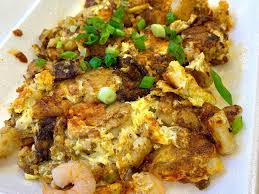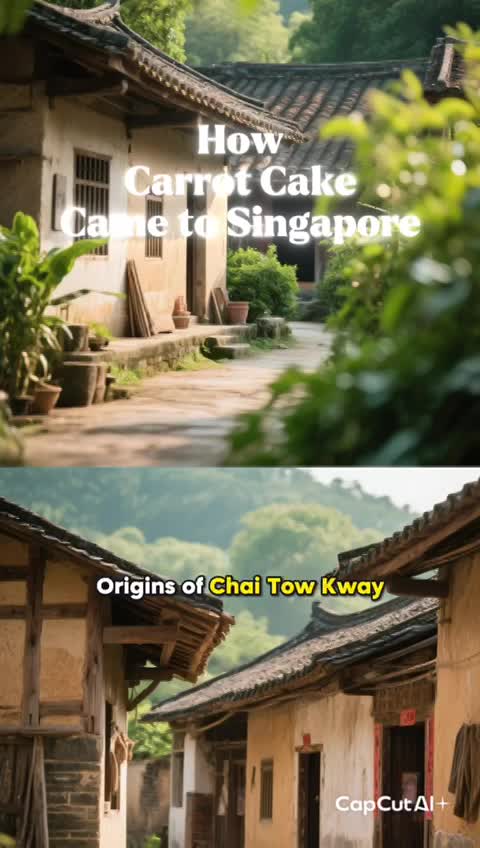Carrot Cake: A Crispy, Savoury Favourite

Origins of Chai Tow Kway
- From Southern China (Teochew community)
The dish traces back to Teochew immigrantsfrom China who came to Singapore and Malaya in the 1800s.- In Teochew dialect, “chai tow” means radish (daikon/white carrot).
- “kway” means rice cake.
- So, it’s essentially radish flour cake, made from rice flour and shredded white radish, steamed into firm blocks.
- Early Teochew staple
This radish cake was originally eaten plain, steamed, or pan-fried during festivals and family meals.
📖 Arrival in Singapore
- By the early 1900s, Teochew migrants in Singapore began selling radish cakes at markets and roadside stalls.
- Hawkers adapted it by cutting the steamed radish cake into cubes and frying it with garlic, eggs, and preserved radish (chai poh).
📖 Evolution into Singapore’s Style
- By the 1950s–1960s, it became a popular hawker dish in Singapore, especially in Chinatown and Teochew-populated areas.
- Two main styles emerged:
- White Carrot Cake (白菜头粿) – fried with egg until crispy, no sweet sauce.
- Black Carrot Cake (黑菜头粿) – fried with dark sweet soy sauce, giving it a sticky, caramelised flavour.
- Unlike in China (where radish cake is more often steamed for festivals), Singapore transformed it into a street food wok-fry style, which is now iconic.
🌟 Fun Facts
- Despite its name, it contains no orange carrots — the “carrot” is actually the white radish (daikon).
- Today, you can find it at hawker centres like Bedok 85, Newton Food Centre, and Chomp Chomp.
- It’s part of Singapore’s UNESCO hawker culture recognition.
